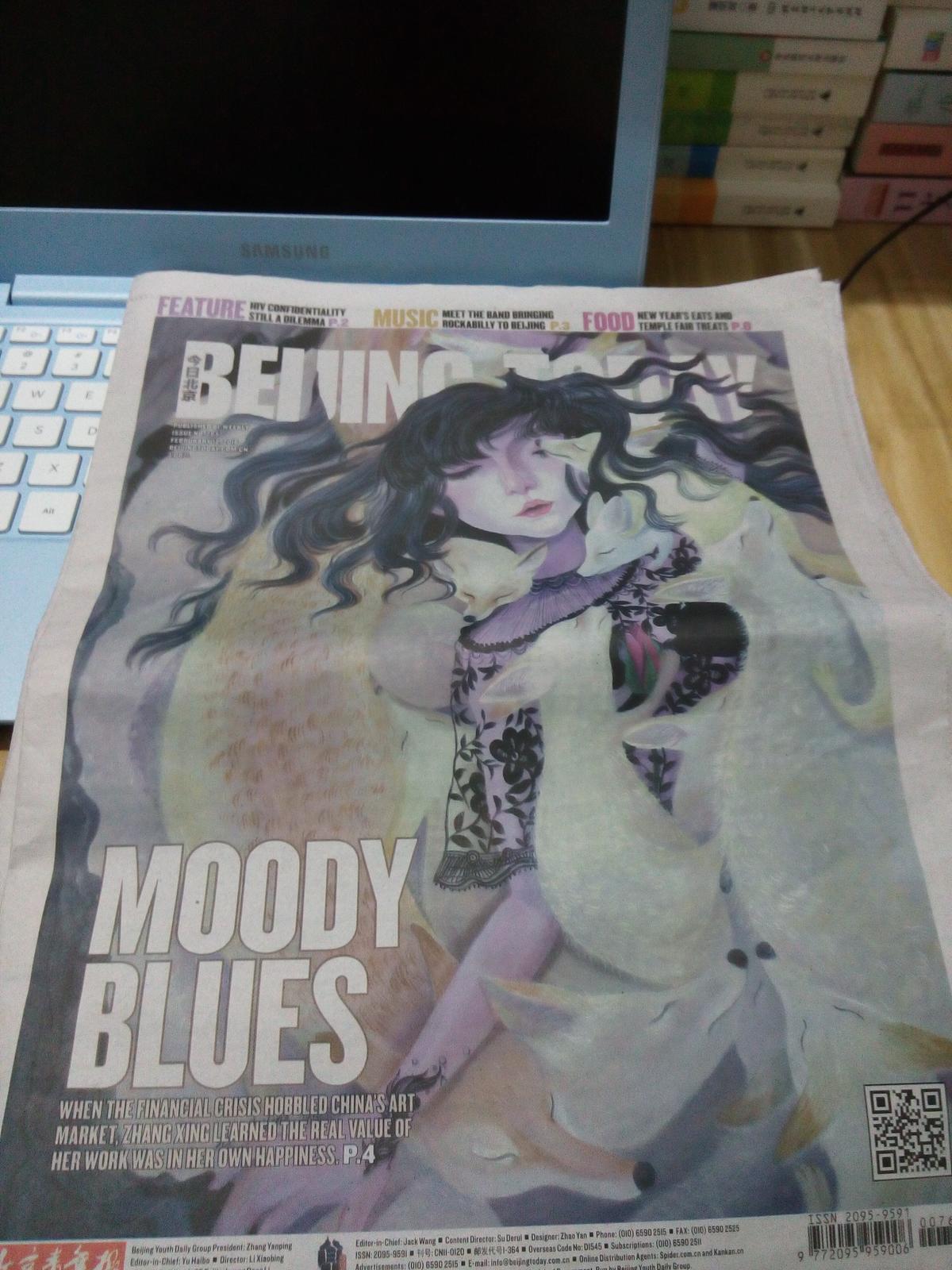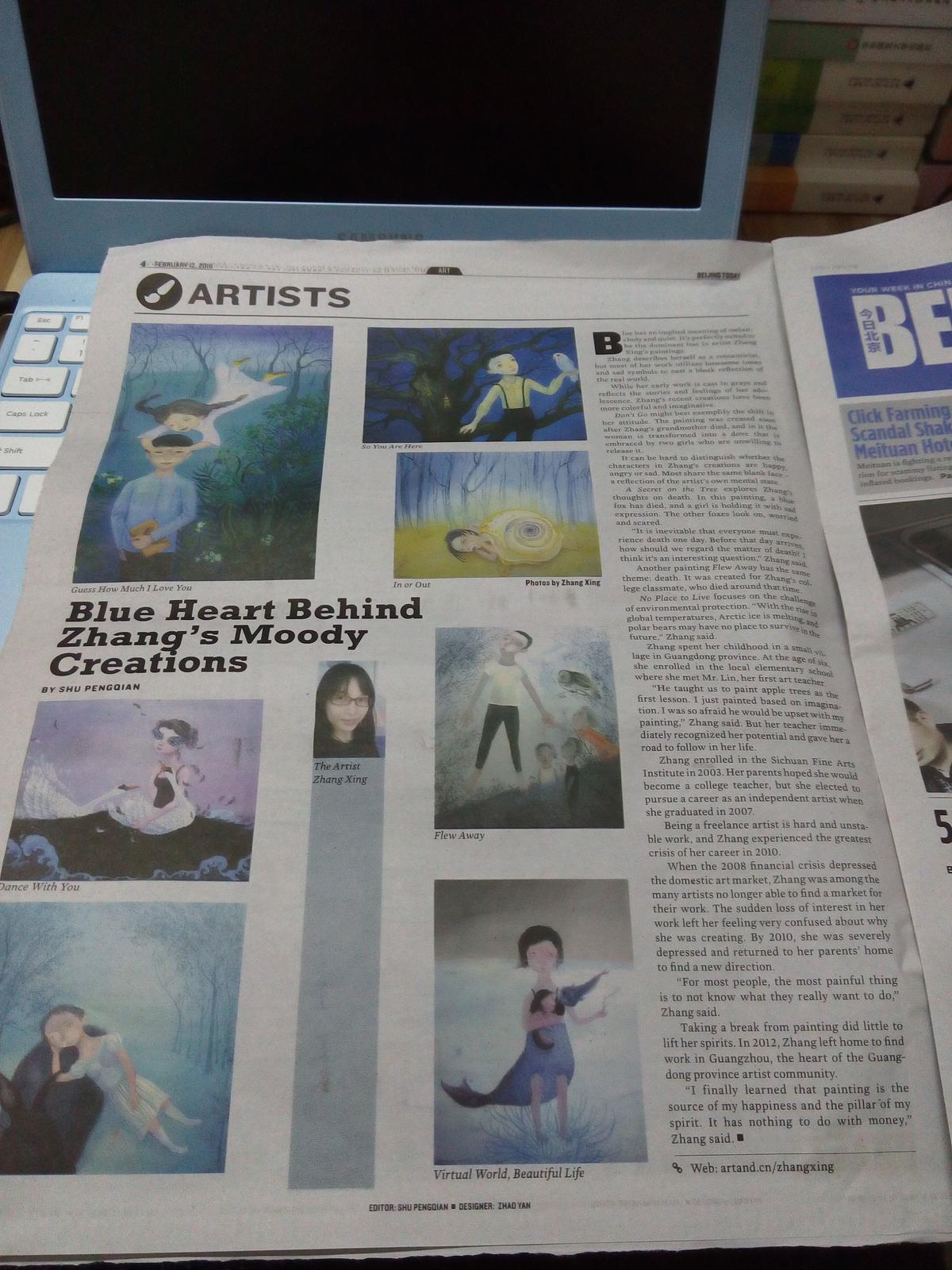Blue Heart Behind Zhang’s Moody Creations



2016年初,接受了英文报BEIJING TODAY的记者的专访,感谢苏鹏倩的翻译与整理。我挺喜欢文章的标题:Blue Heart Behind Zhang’s Moody Creations,与我的创作很贴切。如今,把文章转载到这里,作为留念和分享。(注:原文地址:http://798.io/1OO)(注:图三为今日北京官网截图)
Blue has an implied meaning of melancholy and quiet. It’s perfectly suited to be the dominant hue in artist Zhang Xing’s paintings.
Zhang describes herself as a romanticist, but most of her work utilizes lonesome tones and sad symbols to cast a bleak reflection of the real world.
While her early work is cast in grays and reflects the stories and feelings of her adolescence, Zhang’s recent creations have been more colorful and imaginative.
Don’t Go might best exemplify the shift in her attitude. The painting was created soon after Zhang’s grandmother died, and in it the woman is transformed into a dove that is embraced by two girls who are unwilling to release it.
It can be hard to distinguish whether the characters in Zhang’s creations are happy, angry or sad. Most share the same blank face – a reflection of the artist’s own mental state.
A Secret on the Tree explores Zhang’s thoughts on death. In this painting, a blue fox has died, and a girl is holding it with sad expression. The other foxes look on, worried and scared.
“It is inevitable that everyone must experience death one day. Before that day arrives, how should we regard the matter of death? I think it’s an interesting question,” Zhang said.
Another painting Flew Away has the same theme: death. It was created for Zhang’s college classmate, who died around that time.
No Place to Live focuses on the challenge of environmental protection. “With the rise in global temperatures, Arctic ice is melting, and polar bears may have no place to survive in the future,” Zhang said.
Zhang spent her childhood in a small village in Guangdong province. At the age of six, she enrolled in the local elementary school where she met Mr. Lin, her first art teacher.
“He taught us to paint apple trees as the first lesson. I just painted based on imagination. I was so afraid he would be upset with my painting,” Zhang said. But her teacher immediately recognized her potential and gave her a road to follow in her life.
Zhang enrolled in the Sichuan Fine Arts Institute in 2003. Her parents hoped she would become a college teacher, but she elected to pursue a career as an independent artist when she graduated in 2007.
Being a freelance artist is hard and unstable work, and Zhang experienced the greatest crisis of her career in 2010.
When the 2008 financial crisis depressed the domestic art market, Zhang was among the many artists no longer able to find a market for their work. The sudden loss of interest in her work left her feeling very confused about why she was creating. By 2010, she was severely depressed and returned to her parents’ home to find a new direction.
“For most people, the most painful thing is to not know what they really want to do,” Zhang said.
Taking a break from painting did little to lift her spirits. In 2012, Zhang left home to find work in Guangzhou, the heart of the Guangdong province artist community.
“I finally learned that painting is the source of my happiness and the pillar of my spirit. It has nothing to do with money,” Zhang said.